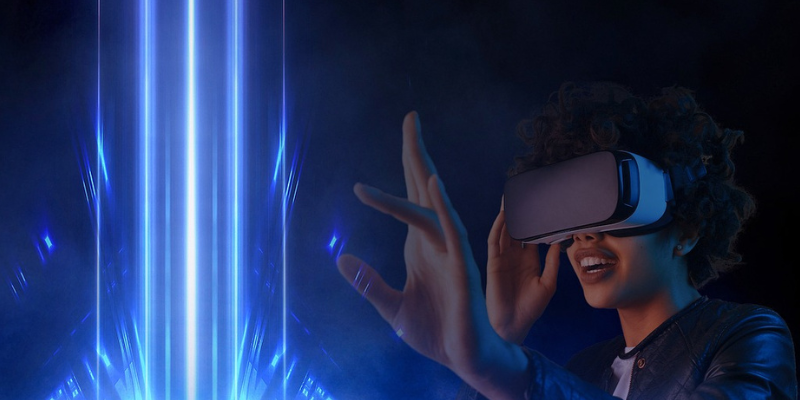Welcome to the future where our digital world is no longer limited to flat screens and handheld devices. Thanks to Spatial Computing, we can now interact with digital content in a way that feels natural and intuitive. From virtual reality games to augmented reality shopping experiences, Spatial Computing has revolutionized the way we engage with technology. In this blog post, we will explore how this innovative technology is changing the game for industries such as gaming, education, healthcare, and more.
Introduction to Spatial Computing
The way we interact with digital content is changing, and spatial computing is at the forefront of this revolution. Spatial computing is the use of computers to create and interpret three-dimensional (3D) spaces. It enables users to interact with digital content in a more natural and intuitive way, using their body and gestures instead of traditional input devices such as keyboards and mice.
This new form of interaction is made possible by advances in technology, including sensors, displays, and graphics processing units (GPUs). These technological advances are enabling a new generation of spatial computing applications that are changing the way we interact with digital content.
Some examples of these applications include virtual reality (VR), augmented reality (AR), mixed reality (MR), and 3D modeling. VR allows users to immerse themselves in realistic 3D environments. AR overlays digital content on the real world, allowing users to interact with it in a natural way. MR combines VR and AR to create even more realistic and immersive experiences. And 3D modeling provides a way for users to create and manipulate 3D objects in a virtual space.
The possibilities for spatial computing are endless, and its potential impact on society is immense. We are only just beginning to scratch the surface of what is possible with this new technology.
How Spatial Computing is Changing Digital Content Experiences
Spatial computing is revolutionizing the way we interact with digital content. By bringing digital content into the physical world, spatial computing allows us to interact with it in a more natural and intuitive way. This technology is already being used to create immersive experiences in gaming and entertainment, and it has the potential to transform how we work, learn, and communicate.
Benefits of Spatial Computing
The recent advances in spatial computing are revolutionizing the way we interact with digital content. By using our natural body motions and gestures, we can now control and manipulate digital objects in three-dimensional space. This allows for a more immersive and intuitive experience that can greatly enhance our productivity.
Some of the key benefits of spatial computing include:
Increased Productivity: Spatial computing can help us to be more productive by allowing us to interact with digital content in a more natural and efficient way. For example, instead of having to use a mouse and keyboard to select and move objects on a screen, we can simply reach out and grab them with our hands. This can save a lot of time and effort, especially when working with complex 3D models or other graphics-intensive applications.
Enhanced Immersion: Spatial computing also provides a more immersive experience than traditional 2D interfaces. When working with digital content in three-dimensional space, we can get a better sense of scale and perspective which can help us to better understand the information being presented. Additionally, the ability to interact directly with virtual objects can make for a more engaging and realistic experience.
Greater Creativity: The increased level of immersion and intuitiveness afforded by spatial computing can also lead to greater creativity. When we’re not limited by traditional input devices, we’re free to experiment and explore new ways of interacting with digital content. This could open up new possibilities for design, gaming
Challenges with Implementing Spatial Computing
There are a few challenges that come with implementing spatial computing into our daily lives. One challenge is that we need to be able to create 3D content. This type of content isn’t easy to create and it can be expensive. Another challenge is that we need devices that are capable of displaying 3D content. Most devices today aren’t equipped to do this. We need to have a way to interact with this content. We can’t just use traditional input methods like a keyboard and mouse. We need new ways to interact with 3D content if we want to fully take advantage of spatial computing.
Examples of Companies Using Spatial Computing
There are a number of companies that are using spatial computing to revolutionize the way we interact with digital content. Here are a few examples:
– Magic Leap is one of the leading companies in the field of spatial computing. They have developed a headset that allows users to see and interact with digital content in a three-dimensional space.
–Apple Vision Pro: The Apple Vision Pro represents a groundbreaking spatial computer that effortlessly integrates digital content with the real world, enabling users to remain fully engaged and connected to others.
-Facebook Oculus Quest which its primary application of the Oculus revolves around engaging in immersive virtual reality gaming experiences. However, this versatile device extends beyond mere entertainment and can be effectively utilized for various pragmatic purposes, including professional work, academic pursuits, and lifelike or imaginative simulations.
– Google is also working on spatial computing technology with their Tango project. Tango uses special sensors and cameras to map the environment and create a 3D model of it. This allows users to interact with virtual objects as if they were real.
– Microsoft is another company that is investing in spatial computing technology. Their HoloLens headset lets users see and interact with holograms projected into their environment.
Conclusion
Spatial computing is revolutionizing the way we interact with digital content, and it’s only going to become more important in the years to come. By leveraging augmented reality and virtual reality technologies, spatial computing can create immersive 3D experiences that allow users to interact with digital content in a way that was previously impossible. As these technologies continue to evolve, we will likely see more applications for spatial computing across industries such as retail, entertainment, and healthcare. Ultimately, spatial computing has the potential to change the way we engage with digital content forever.













